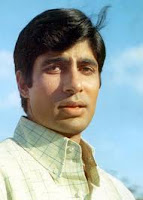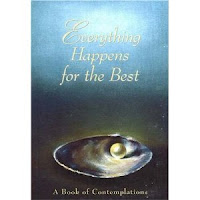
As I look forward to Navarathri that commences on Friday 8th Ocotber, I thought of writing this blog. Navarathri (nine nights) connotes worship of mother goddess in the form of Durga, Lakshmi and Saraswati for nine days and nights to commemorate the mythological belief of annihilation of the demon Mahishasura who had accrued vast power that even Gods would have been unable to defeat him . Goddess Durga was created by the combined engeries and powers of Lord Brahma, Vishu and Shiva to rid the demon to restore peace and prosperity. Goddess Durga fought for nine days and nights and upon vanquishing the demon, acquired the name Mahishasuramardini (vanquisher of Mahisha).
During Navarathri, , the festival of nine nights is observed with great devotion, and fervour all over India, each state in India following their own special and grand ways of observing it. Devotees pour into the temples and mandals were prayers, poojas (special rituals), songs and dances are conducted everyday. One the first three days, Goddess Durga is invoked to destroy our vices and defects. On the second day, Goddess Lakshmi is invoked for wealth of spirituality. On the third day, Goddess Saraswati is invoked for knowledge and wisdom. The 10th day is celebrated as Vijaydashmi in South India and Dussherra in North India, the day Goddess came out victorious after annihilating the demon. The spiritual verses of ‘Devi Mahathmyam’ (Glorification of the Goddess) is chanted in South India during the nine days.
In reality, the vanquishing of the demon and subsequent victory is attributed to the ongoing war within and without us. When we examine ourselves, we are in constant war with the good and bad attitudes, thoughts and beliefs within us, therefore, bringing us to enjoy or suffer the consequence of the actions based on these. Moreover, man’s ability to cause pain and suffering to others is also not an unknown fact. We are also influenced by the good and bad that happens around us that makes us take decisions and actions that affect our lives and values and relationships.
Navarathri is not just a festival but has a huge significance and reminds us to look within ourselves. This is a time to tap into the powerful strength and positive energy from the Universe and invoke the power within us to bring within us a change, to fight the wrong and false attitudes we harbour, to fight our weaknesses, obsessions, addictions, to fight against injustice and a time to re-evaluate how we act in our daily lives, how we live our lives and affect the lives of those around us, are we kind, helpful and caring to one another, or are we drowning in our self centeredness?. Are we positively productive, do we influence others in a negative or positive way? Do we fight injustice or unrighteouness ? Navrathri is a time for instrospection and reflection, to turn inwards for answers, an opportunity to bring a change within ourselves and around us. A time to identify our negative traits and qualities and vanquish them , allowing love, peace and healthy attitudes to flow into our lives spreading it around in our journey of life.
Though I am writing this blog from Kuwait, I shall talk about the Navarathri experience in Trivandrum, which I had the great fortune to be a part of during my last four years of stay there . The whole city witnessess the majestic procession where the idol of Saraswati Devi is brought from Padmanabhapuram Palace along with idols of Velayudha Perumal (Subramaniam), silver horse from Velimala, and Munnutinanga from Sucheendram are brought to the city on caparisoned elephants. Saraswati Devi is kept in the Navarathri Mandapam adjacent to the Padmanabhaswami temple. Velayudha and the silver horse proceeds to Aryashala temple and Munnuttinaga to Chenhtitta temple, quite close by to one another. They remain for worship here for 10 days and on the 12th day, returned to their respective abodes again in a grand procession.
Hindus flock to the three premises for a divine view of the three idols. I used to visit the three places, including the Navarathri mandapam which had a huge queue on the outside waiting to enter the premises. The heat from the sun was not a bother, if it were sunny. Neither did the rains matter if it rained. Inside the premises in the day time, children danced and sang and gave performances in front of the diety to seek blessings to excel in those art forms. Simultaneously, huge number of people would queue in the inside, devoid of any commotion to reach their turn for a glimpse of Devi. A sight and feeling too divine to describe for me. One must go there to experience the bliss. In the evenings, Navarathri concerts are held in the Navarathri Mandapam adjacent to the Padmanabhaswamy temple. This lasts for 9 evenings. A total of nine Navarathri krithis dedicated to Mother Goddess Devi, composed by Maharaja Swati Tirunal are sung over nine evenings. The Navarathri concert is a beautiful event that should not be missed as eminent musicians including Prince Rama Varma, enthrall the audience with their soulful rendering . The concert begins at 6pm and ends at 8.30pm. The Navarathri mandapam is decorated beautifully with a number of beautiful lamps, green plantains, artistically put up along with green plaintain leaves, fragrant colourful flowers, lime, incense, all adorn the mandapam which is such a soulful delight. The ambience is spectacular, that guarantees every devotee a divine and unforgettable experience. The dress code to visit the Mandapam would be mundu for men and boys, saree or set mundu for ladies and long skirt and blouse for young girls.
I used to enjoy my visit to Aryashala and Chenthitta temples during Navarathri for yet another beautiful experience. Various temples all over Trivandrum, will have special prayers and poojas, music and dance rendering throughout Navarathri. On last two days school and college children keep their books for pooja to be blessed with wisdom. These can be kept in one’s own house near one’s personal shrine or in the temples. Books are blessed and returned on 10th day called Vijayadeshmi. Little girls and boys under the age of three are initiated into ‘writing in plate of rice’ by elders or eminent scholars and literary persons all over Kerala. A visit to Attukal Devi temple is also a must.
Needless to say, NAVARATHRI is a powerful, inspiring and divine experience, one should not miss. Even if you are away from India, you can still invoke the divine Goddess in your home. Beautiful songs, prayers and hymns are available on Mother Goddess on the internet, one can download and listen to.
Mookambika temple in Kollur is yet another great temple in Karnataka worth visiting during Navarathri to witness the grand Navarathri celebrations there. As I conclude, I am reminded by the first line of a beautiful bhajan my beloved friend with the most melodious voice and great faith in Goddess Mookambika used to sing, that goes 'Shakti De, Bhakti De Durga Maata'. Translated it means, Give me strength, give me faith oh Mother Durga!
This blog is a tribute to Mother Goddess Devi, my wonderful family, friends and my readers.
HAPPY NAVARATHRI










